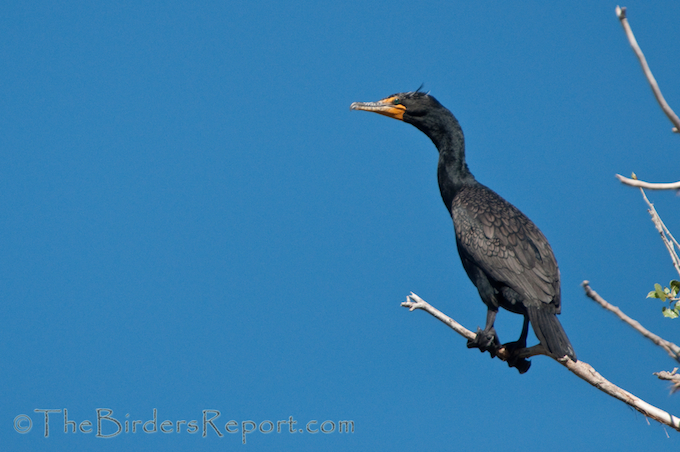 Double-crested Cormorant (Phalacrocorax auritus) photos by Larry Jordan Updated 4/3/2013
Double-crested Cormorant (Phalacrocorax auritus) photos by Larry Jordan Updated 4/3/2013
A couple of weeks ago I was fortunate to be able to take a trip to the San Francisco Bay area and stopped at a few National Wildlife Refuges on the way. The first refuge I visited on my trip South was Sutter National Wildlife Refuge. It is the southern most refuge in the Sacramento National Wildlife Refuge System, located southwest of Yuba City in California’s Sacramento Valley. More on that to come.
The Double-crested Cormorant is the most numerous and most widely distributed species of the six North American cormorants1.
When I arrived at the refuge, the first thing I noticed were several Cormorants of varied ages resting in the trees that lined the slough on the 2.5 mile riparian loop trail. Here you can see a crested adult in breeding plumage on the left, similar to the bird in the first photo, and a juvenile on the right with wings up, grayish head and white on the throat (click on photos for full sized images).
I took this backlit shot of a bird flying in to land on the limb of a tree that had eight to ten birds already perched in it. I had to use some fill light to bring out a small amount of detail but I like the pose.
This time of year, adult Cormorants are seen in their breeding plumage. Their “nuptial crests” (noted in the top photo) are modified contour feathers, narrow, with separated barbs1. They vary in color being black in the east and mostly white in the west. Their eyes turn a beautiful turquoise during breeding season as well.
Updated to include this incredible close up of the Double-crested Cormorant eye from one of my favorite organizations, International Bird Rescue, photo courtesy of Paul Berry.
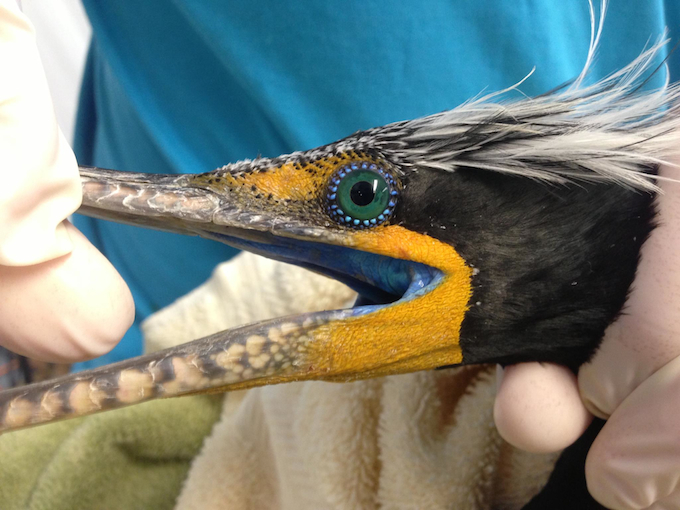
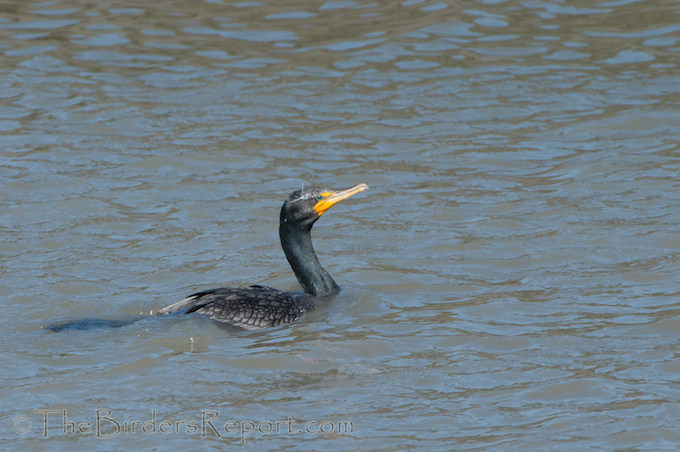 As I was leaving Sutter National Wildlife Refuge, I managed a shot of a juvenile Double-crested Cormorant flying toward me overhead.
As I was leaving Sutter National Wildlife Refuge, I managed a shot of a juvenile Double-crested Cormorant flying toward me overhead.
This photo of an adult, taken back in 2009, shows the more typical slightly bent neck of this bird in flight.
Double-crested Cormorants were also seen the following day at Don Edwards San Francisco Bay National Wildlife Refuge where I photographed this bird drying its wings.
As you can tell from the gray head and white throat, this is a juvenile.
I shot this video of a Double-crested Cormorant on a windy day at Mary Lake as it took off from its perch after lightening its load a couple of times. You will notice how they initially loose altitude as they take off and have to hop on the water surface in conjunction with vigorous wing flapping to get airborne.
Stay tuned for full posts on all the National Wildlife Refuges I visited on this recent trip to the San Francisco Bay area on the Wildlife Conservation Stamp website. Please take the time to visit the stamp site and like us on Facebook!
To see more great bird photos, check out The Bird D’pot and Wild Bird Wednesday.
References: 1Birds of North America Online

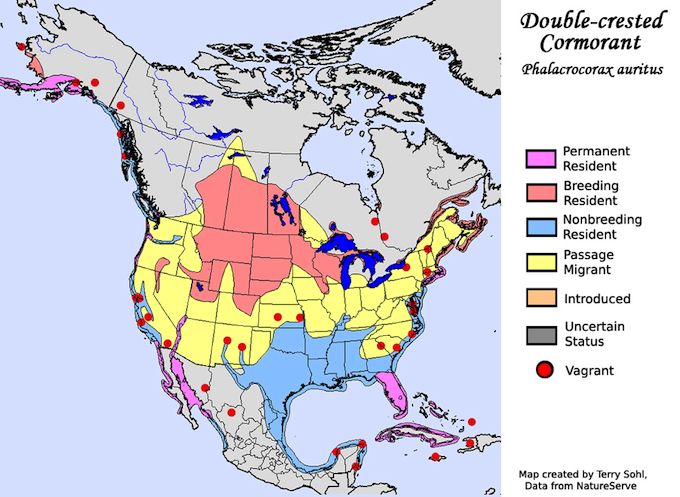
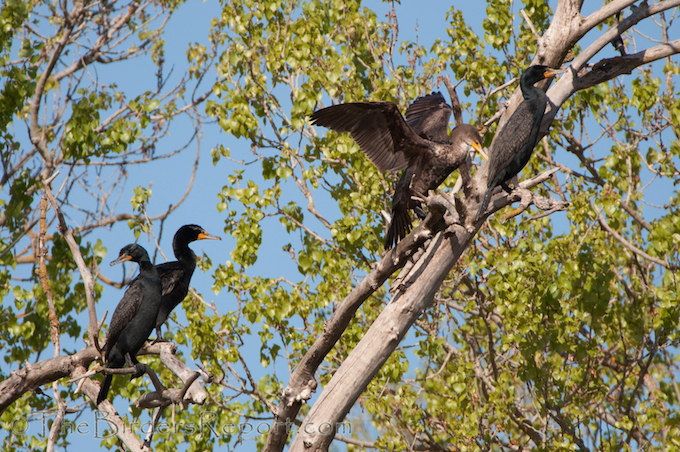

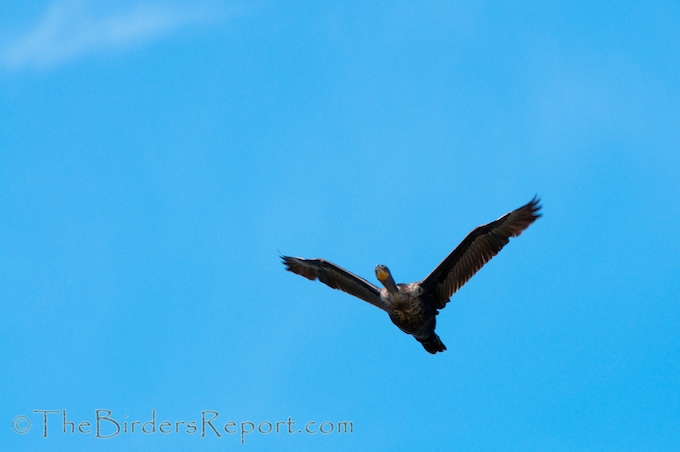
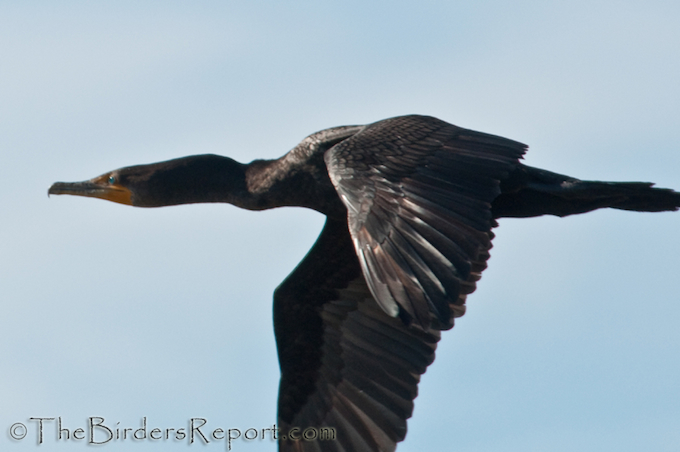
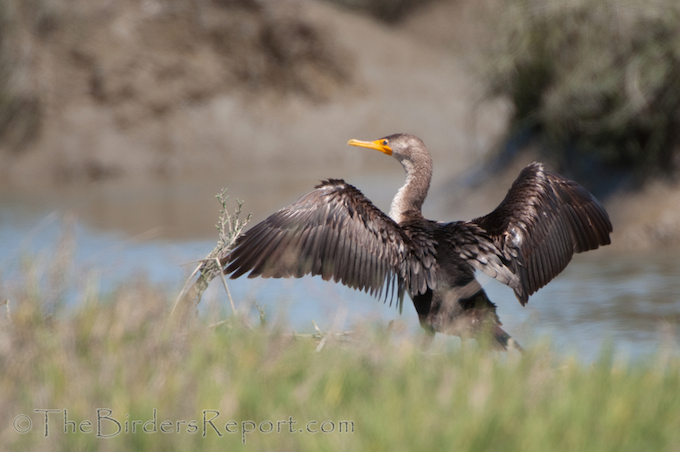
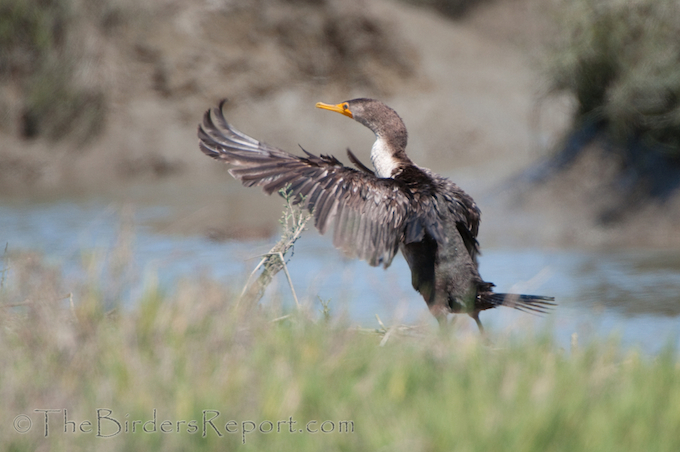
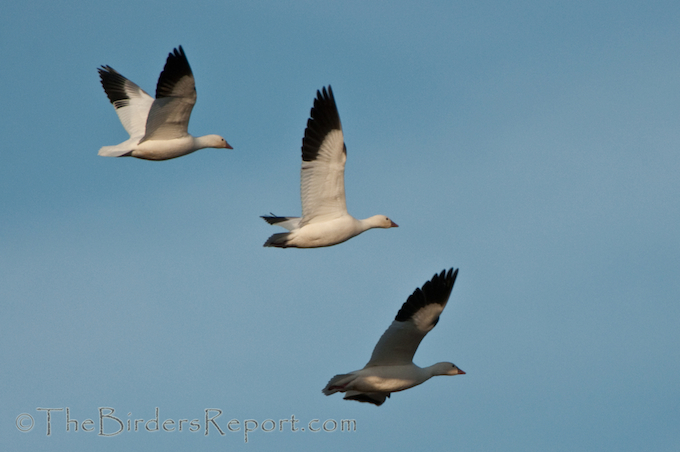
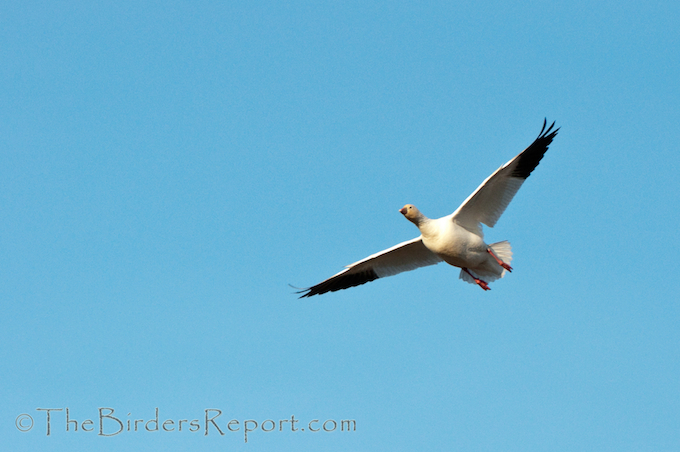
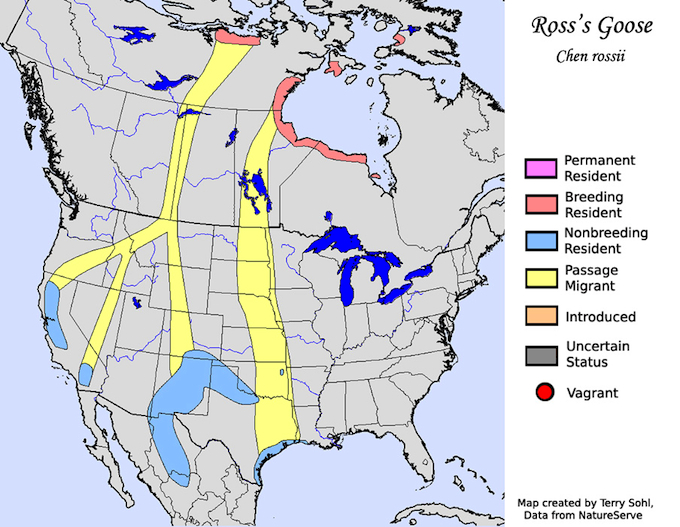
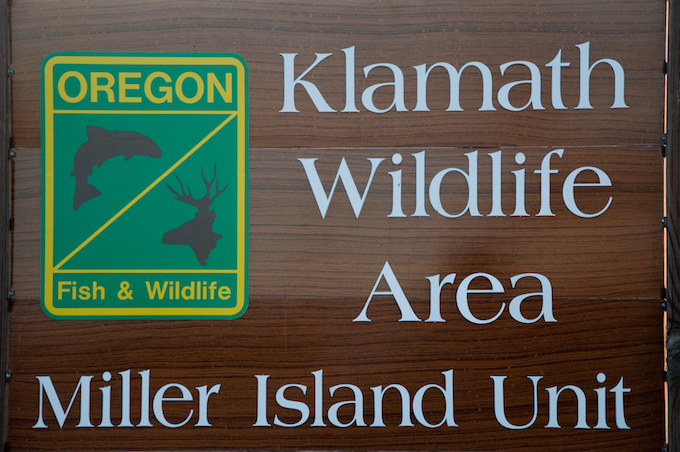
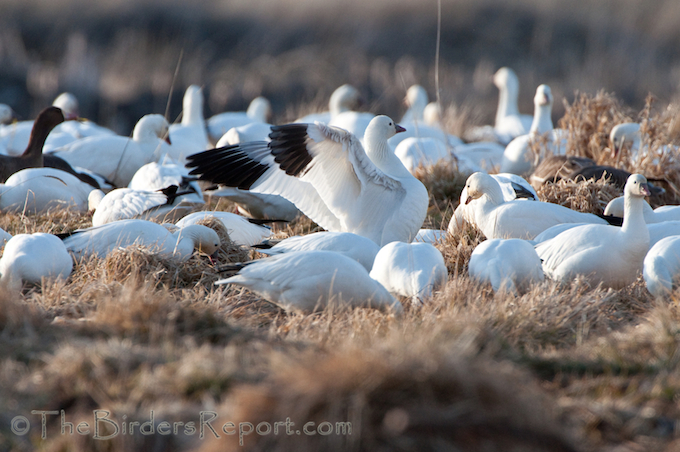
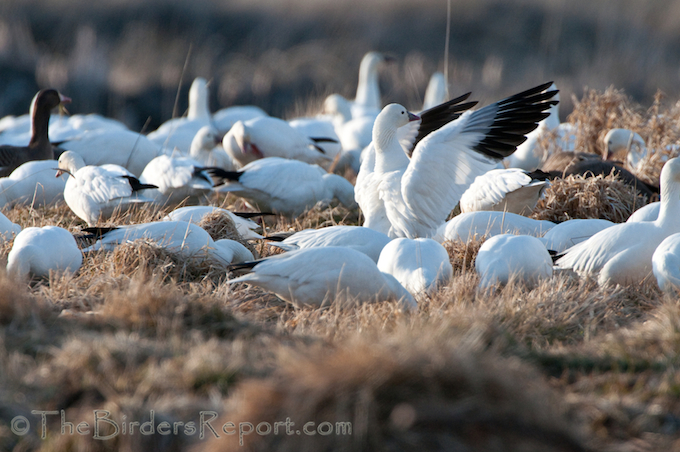

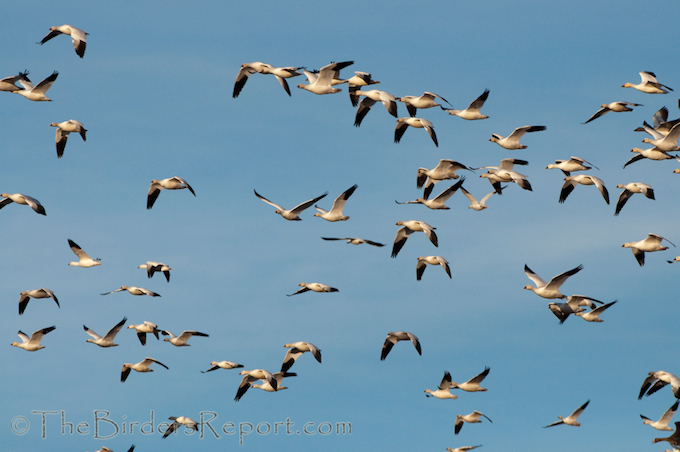
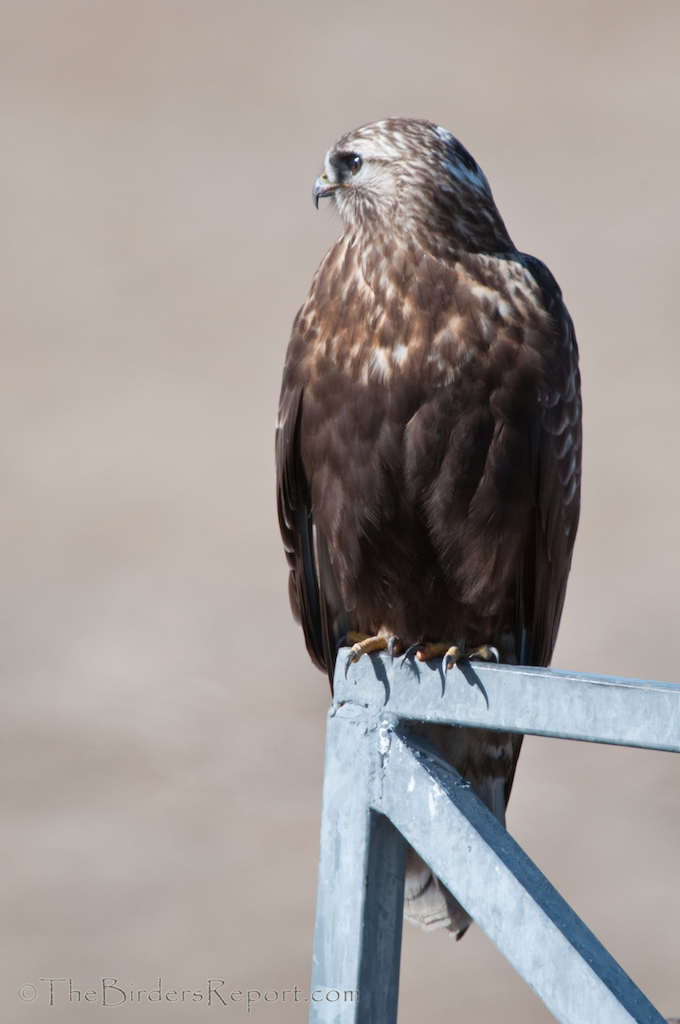
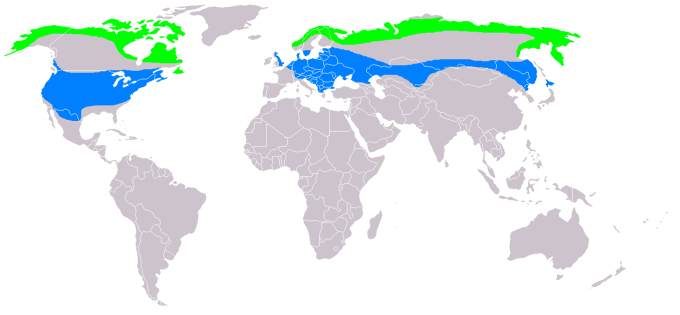

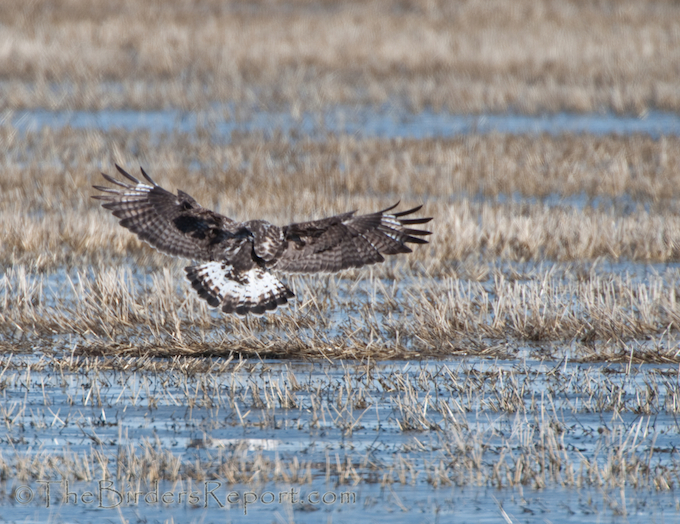
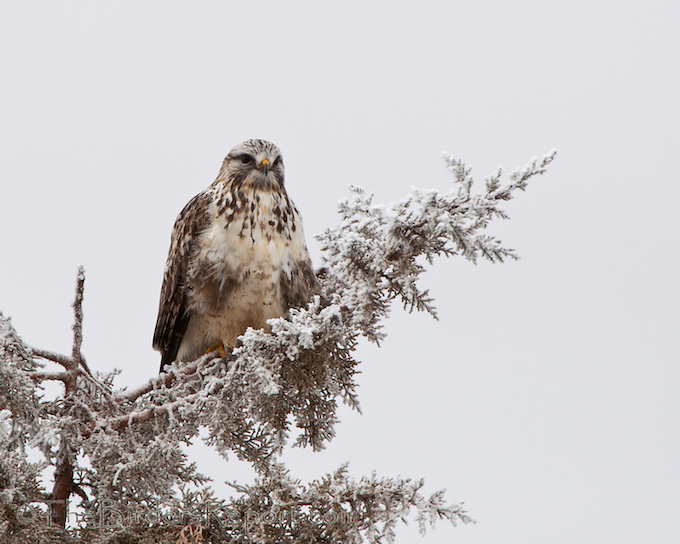
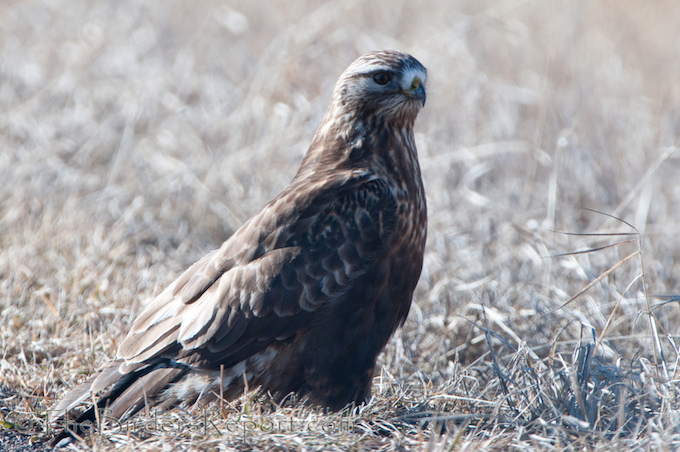
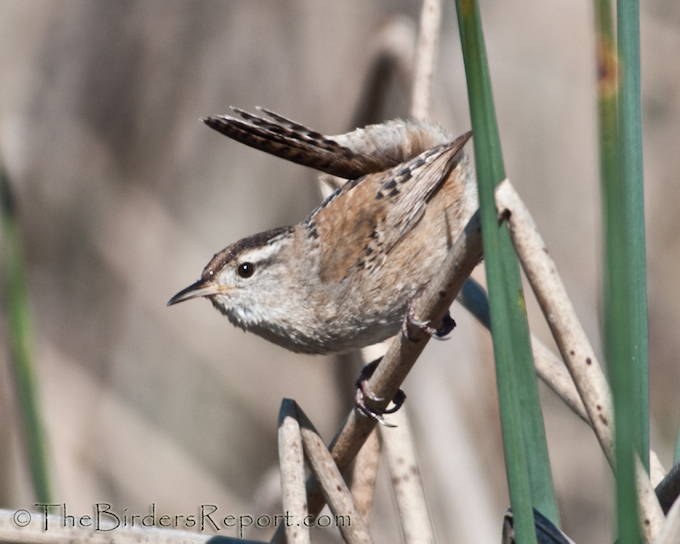



Social Media Connect